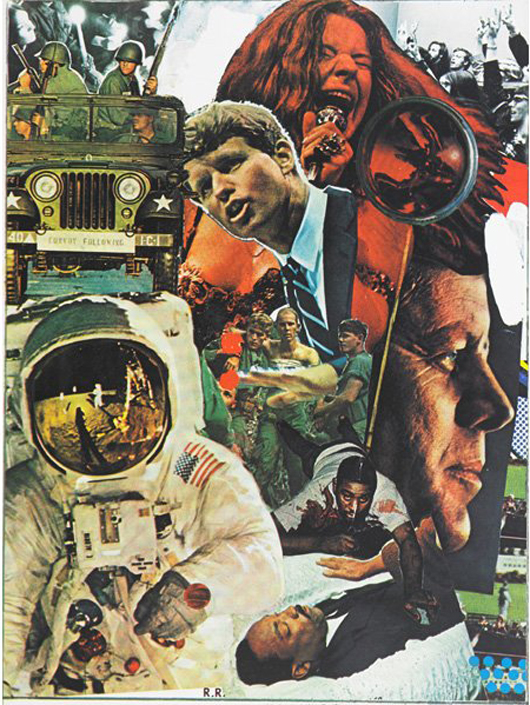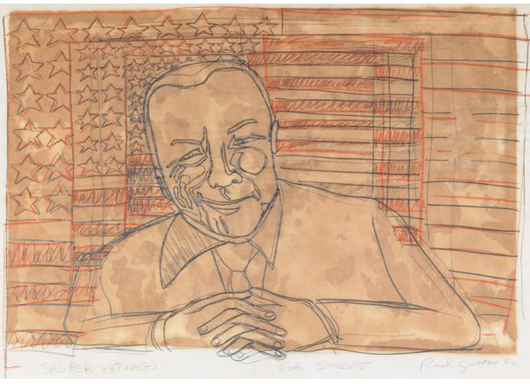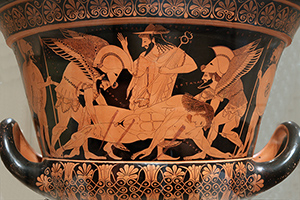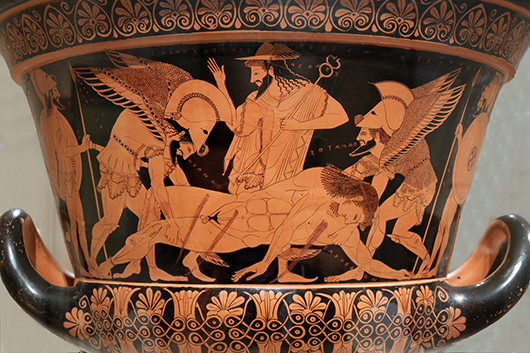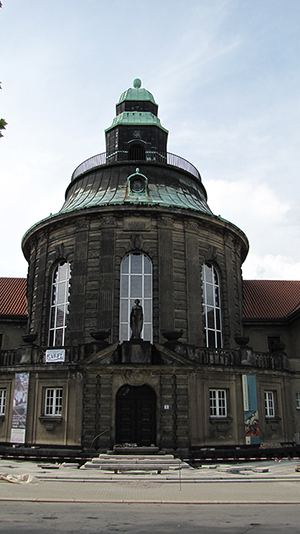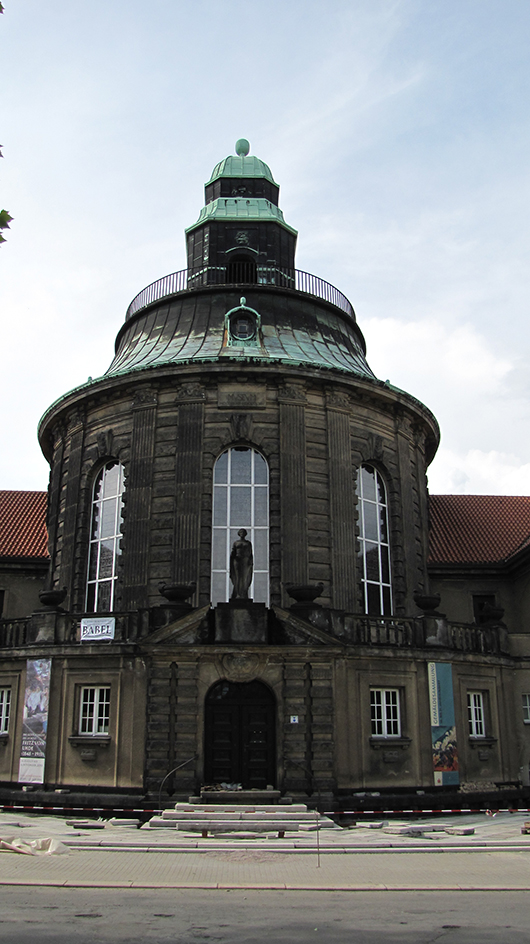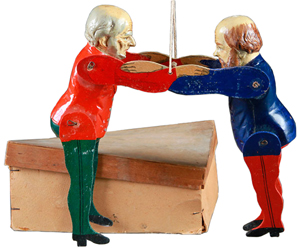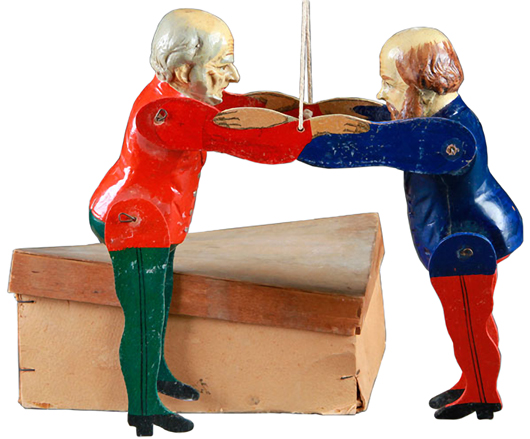
Thangka embroidered picture of a yogi, 127 by 86 cm (50 3/4 inches by 34- 1/2 inches). Estimate £60,000-£80,000. Dreweatts & Bloomsbury Auctions image. LONDON— Dreweatts & Bloomsbury Auctions will be taking part in Asian Art London for the first time this year and have marked this prestigious occasion with a sale of some of the finest Chinese Ceramics and Asian Works of Art. The sale will be the final auction of the event and will take place on Monday, Nov 11. Internet live bidding will be provided by LiveAuctioneers.com.
“Dreweatts and Bloomsbury Auctions are delighted to be participating, for the first year, in Asian Art in London,” said Dr. Benedetta Mottino, Dreweatts & Bloomsbury Auctions’ Asian ceramics and works of art specialist. “To mark such an important event, we will have our first Asian art sale in our London Mayfair saleroom and are offering an exceptional selection of artworks. In particular, we are very proud to offer a rare 18th century Sino-Tibetan Thangka on silk of Milarepa, one of Tibet’s most famous yogis and poets, as well as fine jade carvings, porcelain wares, Indian miniatures, Tibetan sculptures and Japanese lacquer furniture, all from private collectors from the UK or Europe.”
One of the outstanding works of art on sale during Asian Art in London, the Thangka, an embroidered picture, is filled with ancient Tibetan mysticism. The painting is one of the finest products of the Karma Gardri painting school of eastern Tibet and displays the distinctive techniques and the influence of Chinese stylistic conventions, typical of work from this school.
The picture depicts the yogi seated in a relaxed pose, surrounded by his students, Gampopa and Rechungpa, the fierce hunter Chirawa Gumbo Dorje and the goddess of the Mountain, Tseringma. Milarepa is one of the most celebrated figures of Tibetan Buddhism. Living during the 11th and 12th centuries as an ordinary Tibetan, he retired to the Himalayas where he turned to the study of Tantric Buddhism and achieved enlightenment under the teachings of the of the great Master, Marpa. This imposing painting stands at 127 x 86 cm and has come from a private European collection (estimate £60,000-£80,000).
Also from a private European collection, a stunning Chinese Imperial consort’s formal court robe depicts nine embroidered five-clawed dragons clutching or confronting flaming pearls amid dense ruyi clouds on the front and back. Interspersed are bats and the ‘Eight Precious Things,’ which were drawn from a large repertoire that symbolized luck and prosperity, while the pearls represent good fortune. Finely worked in satin stitches in shades of blue, green, red, aubergine and ochre and couched vibrant gold threads, the robe has matching dark blue-ground cuffs and collar worked with further dragons amid bats, clouds and waves (estimate: £8,000-£10,000).
A fine selection of jade jewelry and objects of vertu includes a wonderful late 17th or early 18th century water pot, modeled in the shape of a large curving lotus leaf. Worked in high relief and openwork design to create the base, the translucent stone has a pale celadon-green tone with gray inclusions. Estimate £30,000-£40,000.
Among Japanese pieces in the sale a rare Meiji period Kinkozan Satsuma vase by Sozan is particularly important. Few, if any, other works by the potter are decorated with such elaborately pierced and molded upper sections, a feat of technical virtuosity for both the potter and the kiln handlers. Signed in an elaborate baroque cartouche “Dai Nihon Satsuma Kinkozan sei,” it carries a further signature on the reserve, “Sozan ga.” Sozan is arguably the most sought after Satsuma artist after Yabu Meizan, and some of the finest Kinkozan works came from his hand. The vase bears an intricate reticulated design of Prunus branches above a profusion of floral sprays and continuous landscape scenes (estimate: £3,000-£5,000).
All of the items offered for sale are from private UK or European Collections. The auction will take place at Dreweatts & Bloomsbury’s Maddox Street saleroom in London’s Mayfair.
ADDITIONAL LOTS OF NOTE
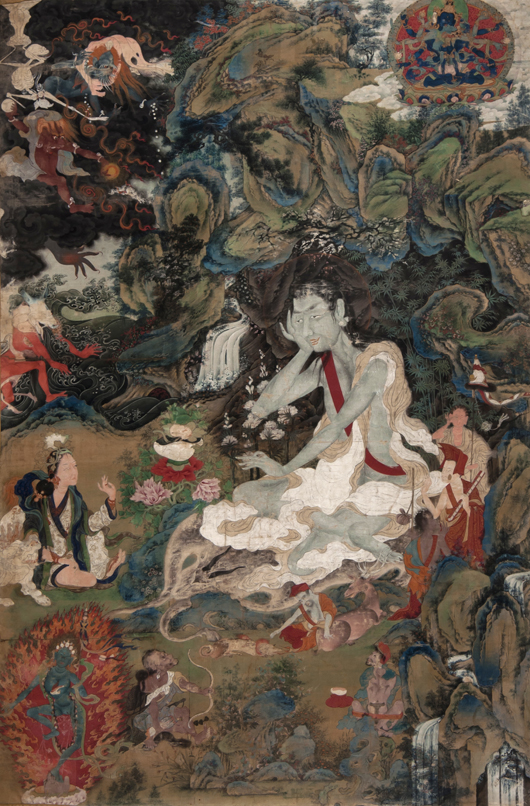
Thangka embroidered picture of a yogi, 127 by 86 cm (50 3/4 inches by 34- 1/2 inches). Estimate £60,000-£80,000. Dreweatts & Bloomsbury Auctions image. 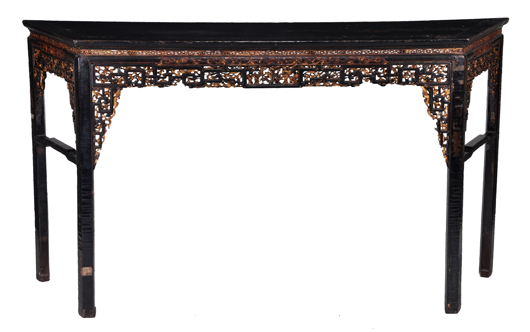
Chinese black lacquered altar table, late Qing period, 104cm wide, 207cm wide (41 1/2 inches by 82 3/4 inches). Estimate: £4,000-£6,000. Dreweatts & Bloomsbury Auctions image. 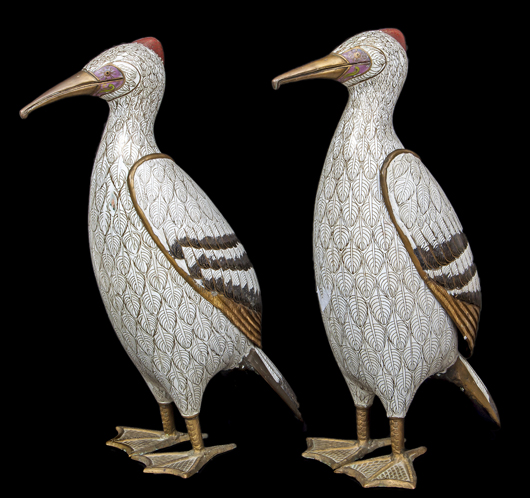
Pair of Chinese cloisonné cormorants, 19th century-early 20th century, 72cm (28 3/4 inches high. Estimate: Estimate: £2,000-£3,000. Dreweatts & Bloomsbury Auctions image. 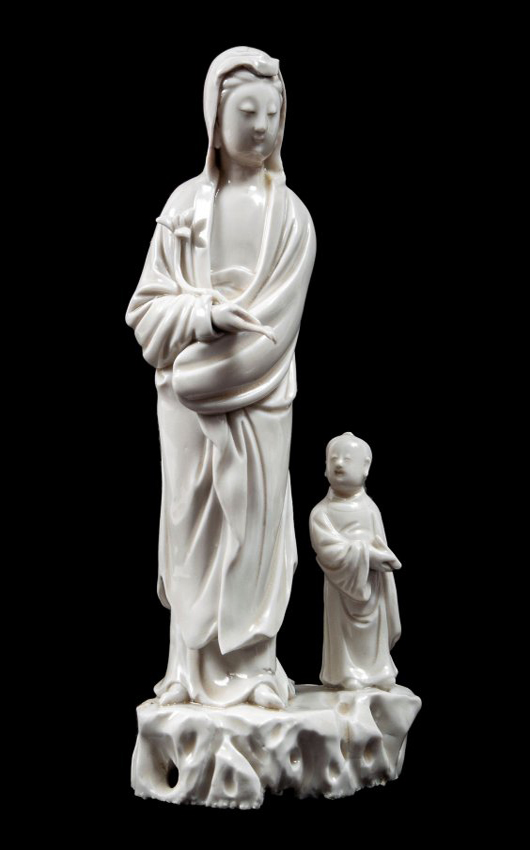
Chinese blanc de Chine figure of Guanyin, 17th century, finely modeled with a serene expression, flanked by the acolyte Shancai who holdsa tablet, 25.5 cm (10 1/4 inches) high. Estimate: £4,000-£6,000. Dreweatts & Bloomsbury Auctions image. 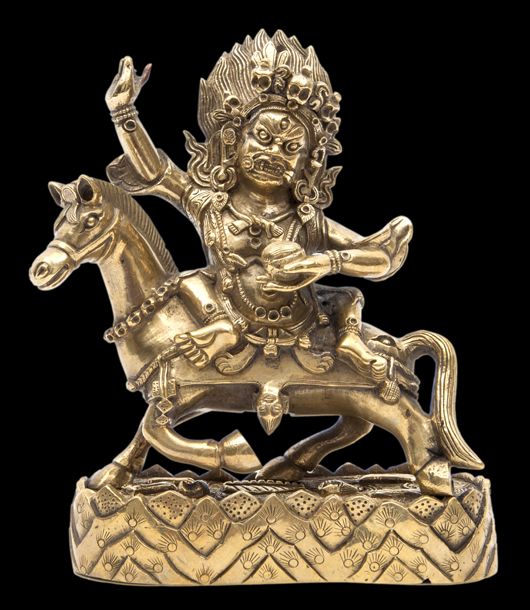
Tibeto-Chinese gilded copper figure of Palden Lhamo (Shri Devi) on horseback, 18th century, her right raised in vitarkamudra. Estimate: £3,000-£5,000. Dreweatts & Bloomsbury Auctions image. 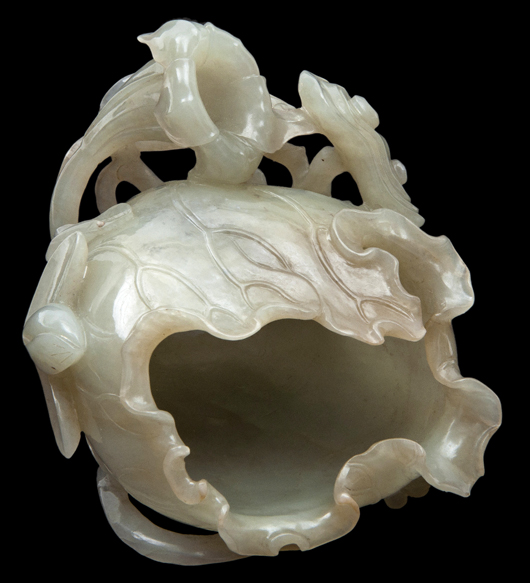
Late 17th or early 18th century water pot, modeled in the shape of a large curving lotus leaf. Worked in high relief and openwork design to create the base, the translucent stone has a pale celadon-green tone with gray inclusions. Estimate: £30,000–£40,000. Dreweatts & Bloomsbury Auctions image. 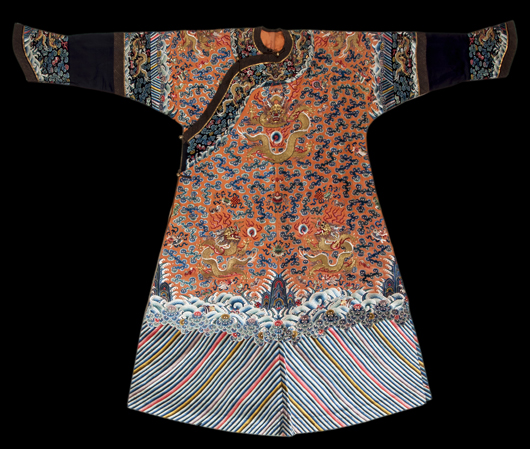
Chinese Imperial consort’s formal court robe. Estimate: £8,000–£10,000. Dreweatts & Bloomsbury Auctions image.



